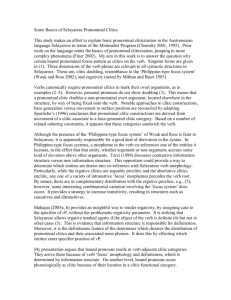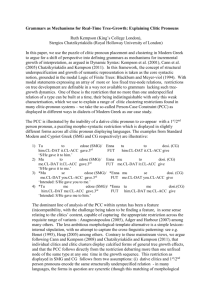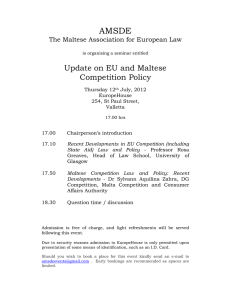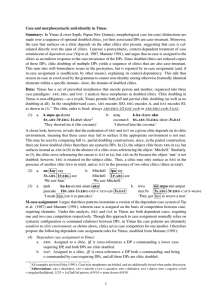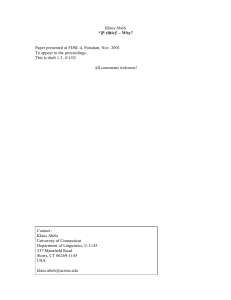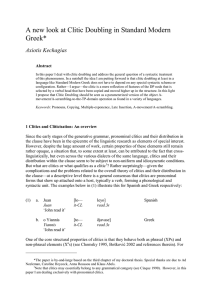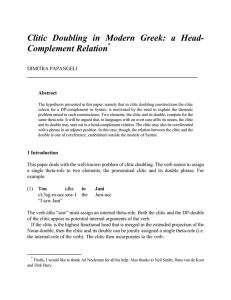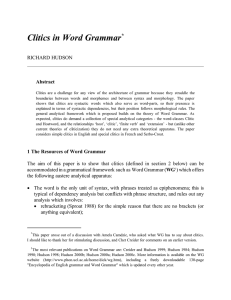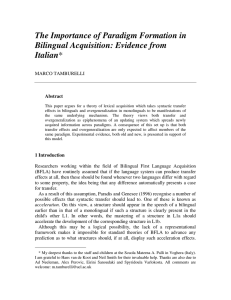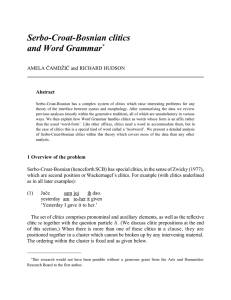Maltese is a topic (as opposed to a subject-) oriented... strategy, in particular in spoken Maltese, is the use of... Clitics and non-defnite NPs in Maltese
advertisement
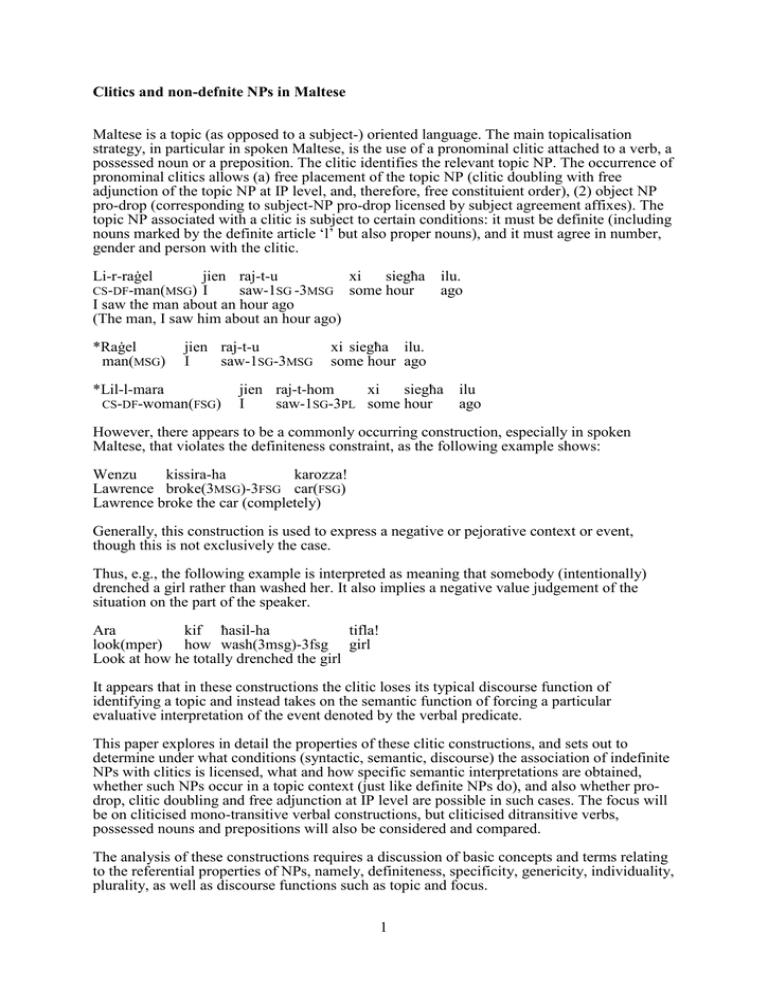
Clitics and non-defnite NPs in Maltese Maltese is a topic (as opposed to a subject-) oriented language. The main topicalisation strategy, in particular in spoken Maltese, is the use of a pronominal clitic attached to a verb, a possessed noun or a preposition. The clitic identifies the relevant topic NP. The occurrence of pronominal clitics allows (a) free placement of the topic NP (clitic doubling with free adjunction of the topic NP at IP level, and, therefore, free constituient order), (2) object NP pro-drop (corresponding to subject-NP pro-drop licensed by subject agreement affixes). The topic NP associated with a clitic is subject to certain conditions: it must be definite (including nouns marked by the definite article ‘l’ but also proper nouns), and it must agree in number, gender and person with the clitic. Li-r-raġel jien raj-t-u xi siegħa CS-DF-man(MSG) I saw-1SG -3MSG some hour I saw the man about an hour ago (The man, I saw him about an hour ago) *Raġel man(MSG) jien raj-t-u I saw-1SG-3MSG *Lil-l-mara CS-DF-woman(FSG) ilu. ago xi siegħa ilu. some hour ago jien raj-t-hom xi siegħa I saw-1SG-3PL some hour ilu ago However, there appears to be a commonly occurring construction, especially in spoken Maltese, that violates the definiteness constraint, as the following example shows: Wenzu kissira-ha karozza! Lawrence broke(3MSG)-3FSG car(FSG) Lawrence broke the car (completely) Generally, this construction is used to express a negative or pejorative context or event, though this is not exclusively the case. Thus, e.g., the following example is interpreted as meaning that somebody (intentionally) drenched a girl rather than washed her. It also implies a negative value judgement of the situation on the part of the speaker. Ara kif ħasil-ha tifla! look(mper) how wash(3msg)-3fsg girl Look at how he totally drenched the girl It appears that in these constructions the clitic loses its typical discourse function of identifying a topic and instead takes on the semantic function of forcing a particular evaluative interpretation of the event denoted by the verbal predicate. This paper explores in detail the properties of these clitic constructions, and sets out to determine under what conditions (syntactic, semantic, discourse) the association of indefinite NPs with clitics is licensed, what and how specific semantic interpretations are obtained, whether such NPs occur in a topic context (just like definite NPs do), and also whether prodrop, clitic doubling and free adjunction at IP level are possible in such cases. The focus will be on cliticised mono-transitive verbal constructions, but cliticised ditransitive verbs, possessed nouns and prepositions will also be considered and compared. The analysis of these constructions requires a discussion of basic concepts and terms relating to the referential properties of NPs, namely, definiteness, specificity, genericity, individuality, plurality, as well as discourse functions such as topic and focus. 1 Although relative common and very salient, especially in spoken discourse, this phenomenon has not been explored at all in the literature in any detail. However, it deserves to be given its due importance, in particular because, apart from intriguing questions about the inherent nature and status of the construction itself, the analysis has significant implications for agreement, for binding, and in particular for the nature of the syntax-semantic interface. 2
